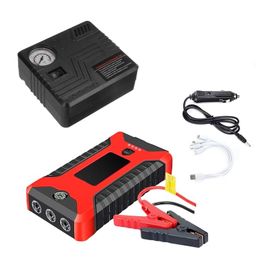Recreational vehicles, boats, golf carts, and power sports machines often contain several batteries requiring frequent recharging. Streamline this tedious process by using advanced multi-bank chargers saving substantial time over charging units individually. The experts at Clore Automotive recommend key features to look for when selecting the proper multiple car battery charger for your fleet.
Prioritizing Desired Features
Simultaneous charging capacity
The foremost function of any multi-bank charger involves simultaneously powering up several batteries at once. Determine how many ports or charging zones your ideal unit requires to handle present and future power storage needs. Also confirm that ample total amperage exists across channels to rejuvenate depleted batteries within the same timeframe as if charged singly.
Dedicated charge rate controls
One-size-fits-all charging rarely proves optimal for mixed battery types with varied ideal rates. Seek models with dedicated charge level controls across individual ports permitting customization as needed per battery. Some machines even analyze and auto-adjust rates continually to hasten charging with minimal oversight. These “smart” charging abilities prove extremely useful for fleets mixing older and newer batteries.
Maintenance mode integration
Proper battery care between uses includes maintaining a float or maintenance charge level. Select chargers featuring dedicated storage modes outputting enough current for topping off batteries without risking overcharging damage. This mode connects quickly for indefinite periods until the next primary charging cycle becomes necessary. It keeps batteries fully prepared for immediate action when stored and unused over the short or long term.
Advanced Diagnostics and Safety
Status indicators and data reporting
Monitoring charge progress manually proves difficult when managing multiple batteries simultaneously. Look for chargers that have individual charging bank indicators plus alphanumeric digital displays quantifying voltage and amp levels. Advanced data reporting through app connectivity takes this one step further for true remote monitoring convenience. Use this feedback to determine when batteries approach fully refreshed status for swapping or deployment.
Automatic multi-stage charging
High-end multi-bank chargers cycle batteries through various precision charge stages tailored to battery chemistry and conditioning needs. This contrasts with basic models that have only single-mode crude charging. Multi-stage units transition seamlessly through various levels: de-sulfation, bulk charge, absorption, equalization, then maintenance. The process requires minimal input while optimizing safety and battery lifespan through “smart” automation.
Fireproof and spill containment
Explosive gas production and leakage risks intensify when attempting to recharge multiple batteries together. Waterproofing alone, then, fails to fully protect against catastrophic failures, which remain possible. Optimal chargers incorporate designs preventing the spread of fires internally while also containing any leaked fluids if components burst. Look for these layered protections for peak security during unattended charging cycles.
Charger Sizing Guide
Evaluate battery quantities
Audit your full inventory of batteries destined for use within the multi-charger initially. Compile details on battery chemistry, charging rate tolerances, and capacity specifications for each set requiring a dedicated charging port or zone. Possessing this data allows properly configuring adequate channels with suitable output abilities tailored to batteries being serviced.
Determine average charging needs
Analyze usage and maintenance patterns for batteries under management to calculate average charging requirements over time. For example, charging two large marine trolling motor batteries monthly differs substantially from re-powering a dozen lawnmower batteries bi-weekly during summer months. This demand ratio influences the necessary power supply, number of ports, and advanced functionality warranted when selecting your ultimate charger.
Conclusion
Charging multiple batteries speedily and safely requires advanced chargers delivering robust functionality. Search out simultaneous multi-bank models with smart charging abilities and comprehensive protections so re-powering your entire battery fleet proceeds quickly regardless of chemistry or quantity. Use this advice when choosing the best charger for saving substantial time, keeping batteries ready for reliable action.

